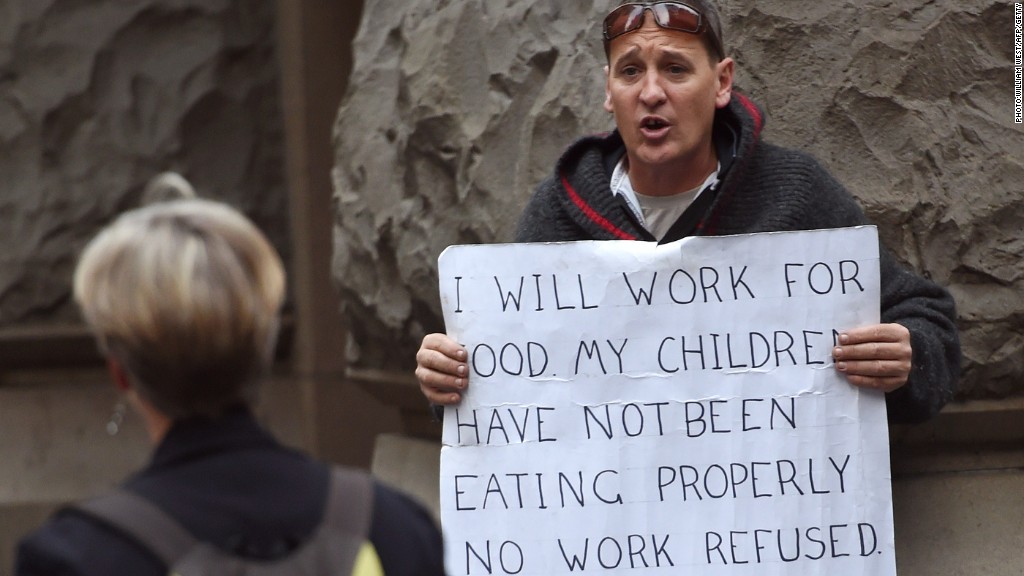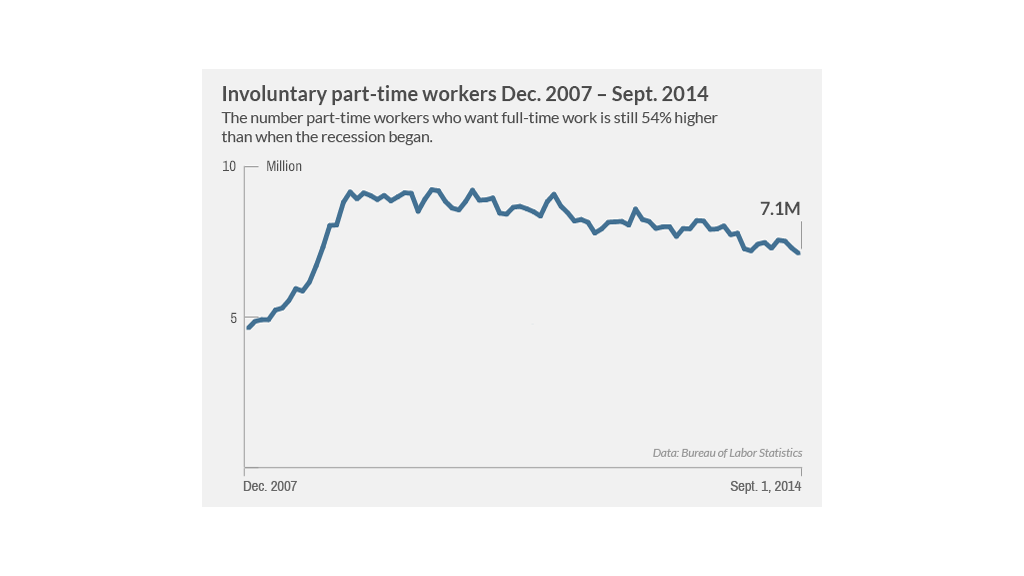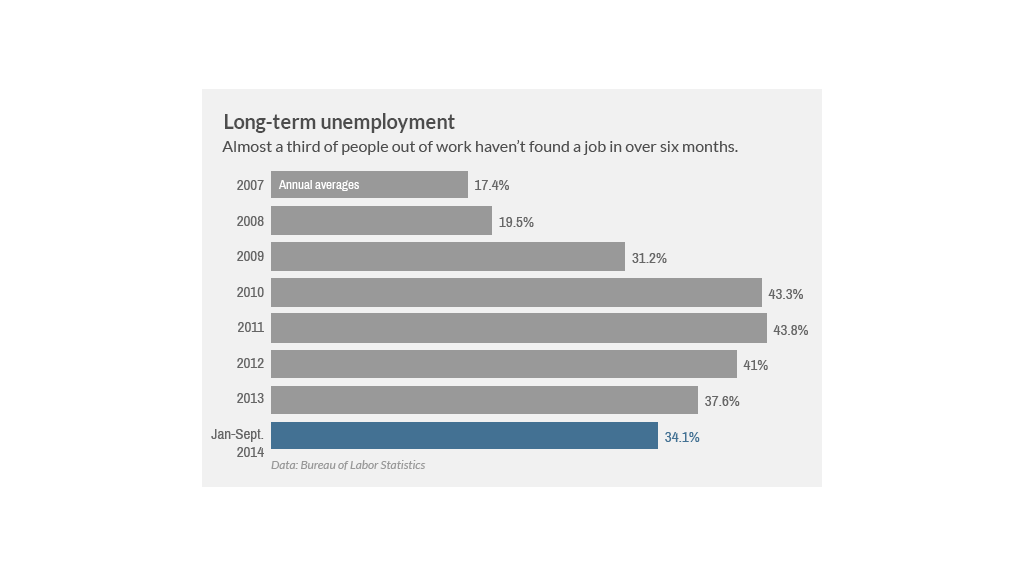
A casual glance at the job market makes it appear that things are a lot better. The unemployment rate was 7.2% a year ago. Now it's 5.9%.
But there's a dark side to this recovery: Millions of people are still unemployed or underemployed.
A close look at three types of frustrated job seekers underscores why the American economy is still struggling.
1. The 'glass is half-empty' workers: Part-time jobs remain a big problem. Over seven million Americans want full-time work, but can only find part-time hours.
Statisticians dubbed this group "involuntary part-time workers."

There are 54% more part-time workers now than when the recession began in December 2007. In other recent recessions, the number of part-timers peaked and then quickly dropped. Since this recession ended, it peaked and is now trickling down very slowly, according to data from the Bureau of Labor Statistics.
Related: Are you a part-time worker? Share your story with CNN
Part-time employment raises questions about the quality of jobs people are finding in the recovery.
"It's one of the big differences between the labor market during this recovery and this crisis compared with previous business cycles," said Jeremy Lawson, chief economist at asset management firm Standard Life Investments in Boston. "It's a group of people that would like a different type of job, but this is the only one they can get."
2. The 'I'm done' crowd: Some job seekers want work, but see such dim chances of employment, they stopped looking for a job four weeks ago. For a slew of reasons — skills, age or no available work — these would-be workers have stopped searching for jobs. These are discouraged workers.

The number of discouraged workers is down considerably from its peak in December 2010. But unfortunately, the current number, about 700,000, is almost double what it was when the recession began.
Discouraged workers represent only a fraction of the issue though. The "missing," workforce that government data does not capture is significantly higher. Missing workers are not employed or looking for jobs because of poor employment prospects, according to a report from the Economic Policy Institute in Washington, a left-leaning think tank.
"We're talking about over 5 million workers who should be in the workforce if we had a healthy economy, but have dropped out over the past four or five years" says Josh Bivens, a labor economist at EPI.
Related: Yellen: Economy still needs Fed stimulus
3. The 'lost workers': People who can't find work for months represent one of the most concerning indicators of the current job market.

At the start of the recession, 17% of all unemployed people were out of work for six months or longer. In September, almost a third of the unemployed population was jobless for half a year or more.
Although long-term unemployment has declined a bit recently, policymakers are still concerned. The Obama administration announced new measures this week to help long-term unemployed workers find jobs.
Related: Janet Yellen wants you to get a raise
Examined a little closer, long-term unemployment is becoming a bigger issue for women. About 35% of long-term jobless workers were women in 2007. Now that number is 44%, according to a recent study by the Congressional Budget Office. Still, men make up the majority of people looking for work for six months or more.
The impact of long-term unemployment goes beyond money.
"To look unsuccessfully for work for over a year, a year and a half, is, psychologically, very discouraging" says Gary Burtless, an economist at the Brookings Institution in Washington. Once government unemployment benefits run out, "Many people temporarily or permanently give up the search."
Economists say the job market will continue to improve, but may take years for these economic wounds to fully heal.


